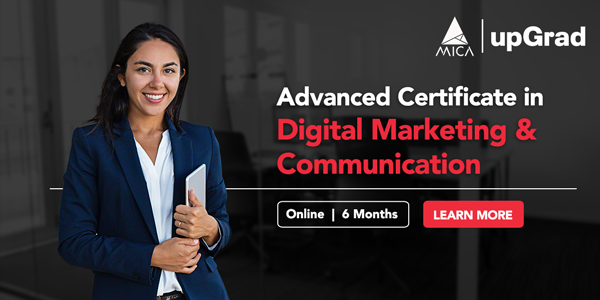Are you struggling to maintain a higher search engine ranking of your website, despite your best efforts, and losing business to the competition?
Worry not! There are many businesses like yours that struggle with challenges of lead generation, conversion, and sales.
Do you know? 75% of searches are active on the first page of search results and never progress further (Courtesy: Google)
To rank higher on popular search engines (Google, Bing, Yelp, DuckGo, etc.) B2C companies engage in an exhaustive digital marketing plan, but the outcome is often discouraging. So, how can businesses evolve with their brand image and convert their target audience?
Welcome to the world of Search Engine Optimization!
Search Engine Optimization (SEO) is a powerful yet undervalued digital marketing tactic to obtain B2C companies’ prospects. It requires a dedicated expert to constantly research the market competition to find powerful keywords that propel the website to a higher rank on the search engines. If you are a beginner in digital marketing marketing, and want to gain expertise, check out our digital marketing courses from top universities.
For B2C companies, innovative keyword research and link building strategies are the pillars of a successful SEO tactic, but the buck does not stop here. For businesses dreaming of being listed on the first page of a search engine can find practical advice in this guide.
How to rank higher on SERPs?
To enable your business to gain new heights of success, we at upGrad Education have designed this guide on best practices on SEO for B2C companies.
- Align content with search objective
Short, crisp, and compelling Meta Description and Title Tag
- Optimize images and page speed
Publish long-form content
- Include keywords in URL
- Use internal linking tactic
- Focus on obtaining authoritative backlinks
- Improve user experience (UX) on the website
SEO Practices for B2C Companies
1. Align Content with Search Objective
Comprehending and fulfilling the search intent (user’s objective) is the backbone of a search query. Pages that appear on the first page of a search engine have passed the search intent’s quality parameters. Search intent can be;
- Informational
- Transactional
- Navigational
- Commercial
Informational – The user intends to seek accurate information on the Web. The query can be a simple search that provides an exact or detailed explanation. Example: “will it rain today?” or “top SEO strategies in 2024.”
Transactional – The user has made a purchase decision for a specific service or product. Example: “buy Dell laptop online.”
Navigational – The user is searching for a specific app or a website, such as Amazon, Facebook, Twitter, etc.
Commercial – The user is seeking information on a specific product/service before he/she makes an informed purchase decision. Example: “laptop brands under 50,000 INR.”
Marketers should create content that resonates with the user’s search purpose for higher page rank. For instance, ranking for keyword “best laptop brands under 50,000 INR,” marketers must understand that the user is seeking detailed information on the keyword. Hence, they should provide a blog or a video that offers a list of all brands that resonate with the search query/keyword.
2. Persuasive Title Tag and Meta Description
The page title and meta description are the essential components of winning SEO for b2c companies.
Title Tags are clickable headlines appearing in search engine results (SERPs).
Google suggests that page titles offer a quick understanding of the content in the SERP. Since a title helps users decide on clicking it; hence titles must be clear, engaging, and meaningful. Search engines like Google display a full title tag if the tag is below 60 characters; therefore, marketers should ensure high-quality and engaging title tags on their web pages or content.
- Include target keywords
- The title must match the search intent
- Keep it short and descriptive
- Do not create duplicate title tags
- Do not stuff keywords
A meta description is a summary of a page displayed below the title tag and used in SERPs. It influences the click-thru-rate (CTR) on a web page.
Google suggests that meta descriptions with their short and meaningful summary notify the users of a web page’s contents and convince them that suitable and valuable content is hosted on the page. Google allows 160 characters for meta description, and hence marketers must write accurate descriptions.
Tips
- Write action-oriented, unique, accurate meta description
- Include target keywords
- Summary must complement search intent
3. Optimize Images and Page speed
Images are crucial to enhanced user experience (UX), but are you optimizing it? Marketers invest time finding apt and engaging images for their web pages, landing pages, product pages, or blogs because images help generate quality traffic to websites. However, optimizing them will only further boost SEO and contribute significantly to organic traffic.
Select an optimal file format for faster page navigation– use PNG for web content and JPEG for photographs
Compress images for faster uploading time – use compressing tools like TinyPNG, ShortPixel, ImageOptim
Add Alt Text for images to improve web accessibility as browsers can understand better images hosted on your site
Lazy-Load images – a technique that prevents non-essential images and videos from uploading, thus improving page upload speed and site performance
Optimizing page speed allows your audience to open and navigate the page quickly. Use Google’s PageSpeed Insights tool to check page speed and make suggested improvements.
Tips
- Allow browser caching
- Delete redundant plugins
- Reduce CSS and JavaScript files
- Reduce the redirect numbers
- Reduce server response time
- Publish Long-Form Content
4. Publish Long-form content
Long-form articles worth 3000+ words generate 3x traffic, 3.5x backlinks, and 4x shares compared to average length articles of 900-1200 words. (Courtesy: Google).
Subsequently, marketers must focus on creating and publishing 2-3 well researched long-form articles that contain valuable and SEO enriched information for users to grasp.
5. Internal Linking
Internal links establish the page hierarchy and enable search engines to comprehend the website structure and its content. It thus helps to boost page rankings in SERP significantly. To boost the visibility of low-performing web pages, add internal links from your website’s top-ranking pages.
6. Include Keywords in URL
Use short, keyword-rich URLs and refrain from using stop words for a concise and clean structure that matches search engines requirement.
7. Focus on obtaining authoritative backlinks
Backlinks are crucial to win Google’s search algorithm and ranking system strategy. To rank higher in SERPs, build authoritative backlinks by reproducing your competitors’ link building strategy.
Best Online Digital Marketing Courses
| Advanced Certificate in Brand Communication Management - MICA | Advanced Certificate in Digital Marketing and Communication - MICA |
| Performance Marketing Bootcamp - Google Ads from upGrad | |
| To explore all our certification courses on Digital Marketing, kindly visit our page below. | |
| Digital Marketing Certification | |
8. Improve User Experience
Search engines focus on users’ behavior towards content. To maintain the top SERPs of your website, maintain optimal page speed, and keep navigation fluid.
Tips
- Use subheads (H1, H2, H3) to make your content search engines and users friendly
- Include videos, images, infographics, etc. to illustrate content
- Use popups sparingly else you risk being penalized by Google
- Use white space between paragraphs to improve the comprehensibility of the content
Deploy these strategies to generate qualified leads that convert on your website!
Top Digital Marketing Skills
What Next?
If you wish to explore and become an expert in Digital Marketing, check out MICA and upGrad’s Advanced Certificate in Digital Marketing & Communication. Become an expert in social media marketing, content marketing, branding, marketing analysis, and PR.
upGrad’s Exclusive Digital Marketing Webinar for you –
What’s new in Marketing?
Digital Marketing Free courses to Learn

![8 Best SEO Practices for B2C Companies in 2024 [How to Increase Your Search Rankings?]](/__khugblog-next/image/?url=https%3A%2F%2Fd14b9ctw0m6fid.cloudfront.net%2Fugblog%2Fwp-content%2Fuploads%2F2020%2F09%2F1023.png&w=1920&q=75)













![10 Best Digital Marketing Project Ideas & Topics for Beginners / Students [2024]](/__khugblog-next/image/?url=https%3A%2F%2Fd14b9ctw0m6fid.cloudfront.net%2Fugblog%2Fwp-content%2Fuploads%2F2020%2F01%2FBlog_cover_Nov-02_3.png&w=3840&q=75)
![Top 20 Fun Social Media Project Ideas & Topics For Beginners [2024]](/__khugblog-next/image/?url=https%3A%2F%2Fd14b9ctw0m6fid.cloudfront.net%2Fugblog%2Fwp-content%2Fuploads%2F2020%2F05%2F569.png&w=3840&q=75)


![Top 11 Careers in Digital Marketing: Ultimate Guide [2024]](/__khugblog-next/image/?url=https%3A%2F%2Fd14b9ctw0m6fid.cloudfront.net%2Fugblog%2Fwp-content%2Fuploads%2F2020%2F02%2F268-Banner.png&w=3840&q=75)
![Top 10 Highest Paying Jobs in Marketing in India [A Complete Report]](/__khugblog-next/image/?url=https%3A%2F%2Fd14b9ctw0m6fid.cloudfront.net%2Fugblog%2Fwp-content%2Fuploads%2F2020%2F05%2F571.png&w=3840&q=75)

